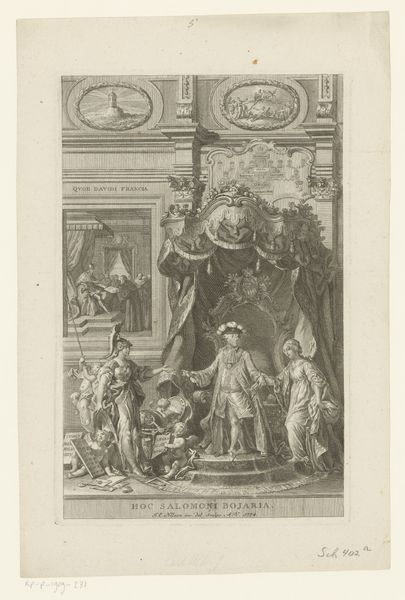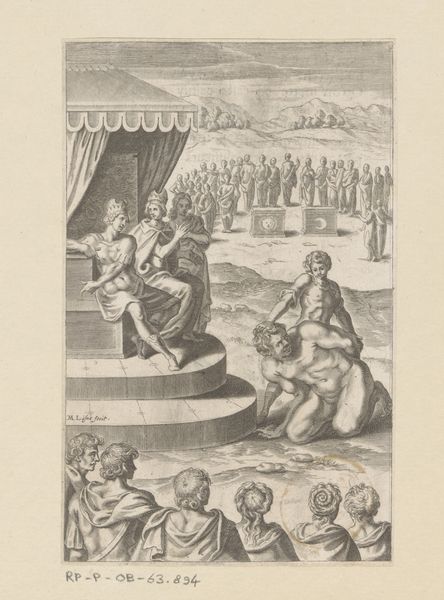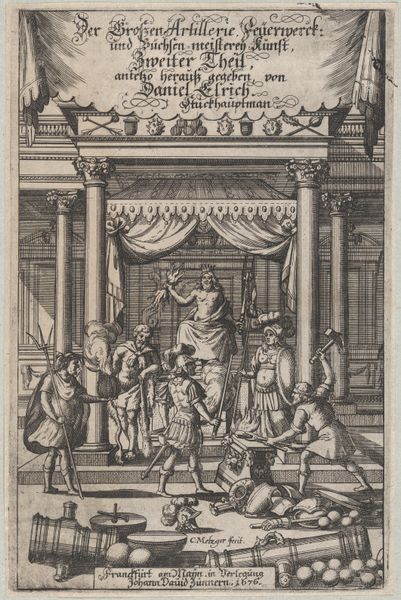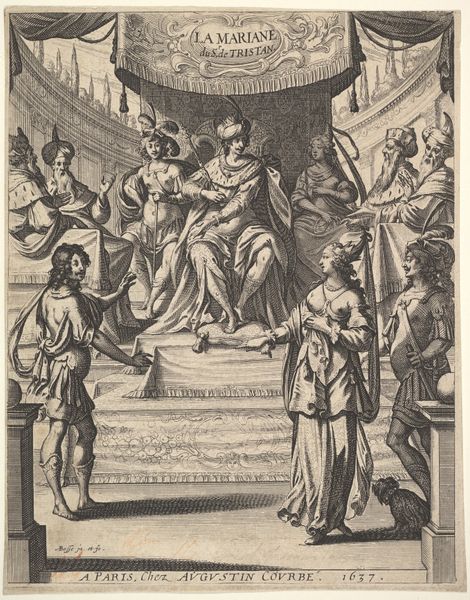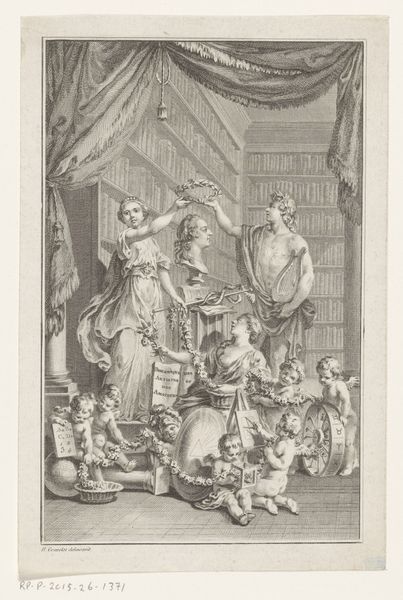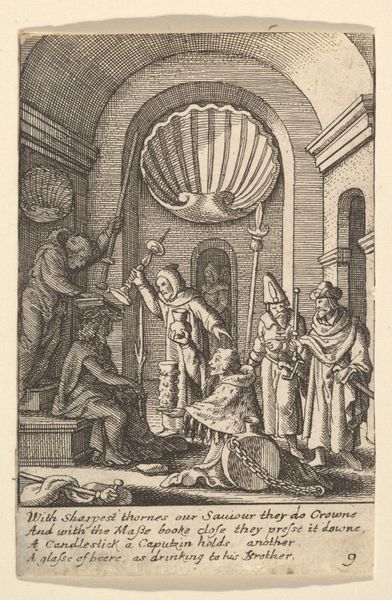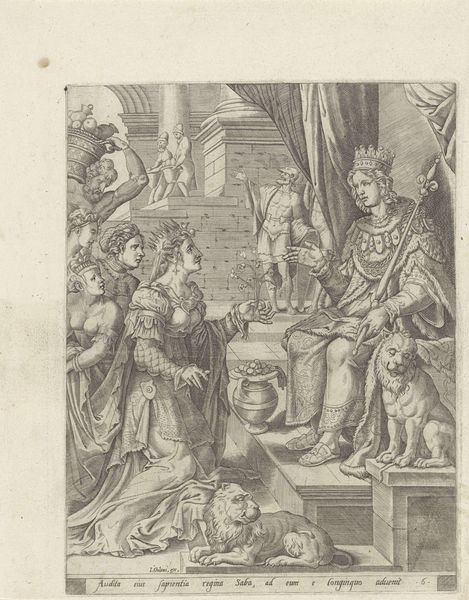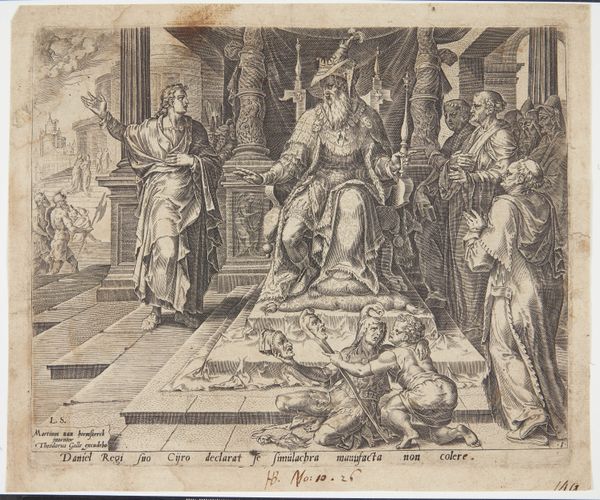
print, engraving
#
narrative-art
# print
#
old engraving style
#
figuration
#
11_renaissance
#
history-painting
#
italian-renaissance
#
engraving
Dimensions: height 384 mm, width 275 mm
Copyright: Rijks Museum: Open Domain
This engraving, "Garden Party in Venice," presents a tableau rich with symbolic resonance, notably the laurel wreath. See how, draped over the canopy, it signifies triumph and honor, a motif deeply rooted in classical antiquity. We trace its lineage from ancient Greece, where victors were crowned with laurel, to Roman emperors claiming divine favor. Observe its cyclical journey through the Renaissance, a revival of classical ideals, where the wreath reappears as a symbol of artistic and intellectual excellence. Yet, the wreath transcends mere victory; it embodies the cyclical nature of life itself. Consider how, in funerary contexts, the wreath represents eternal remembrance, echoing subconscious desires for immortality. This act of adornment speaks to our deepest hopes and fears, resonating with the collective memory that shapes our interpretation of such symbols. Isn't it remarkable how a simple garland can carry such weighty cultural baggage across centuries?
Comments
No comments
Be the first to comment and join the conversation on the ultimate creative platform.
